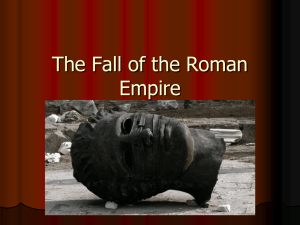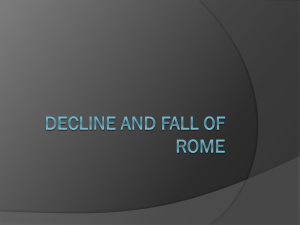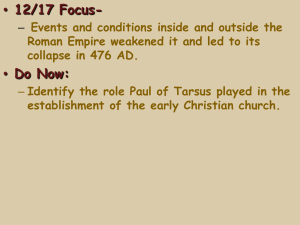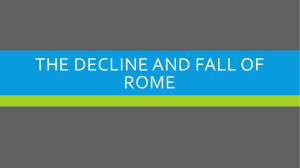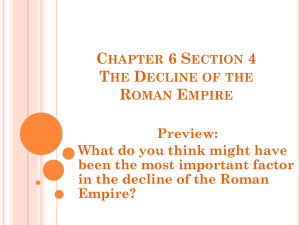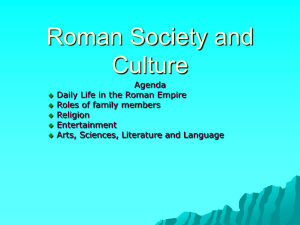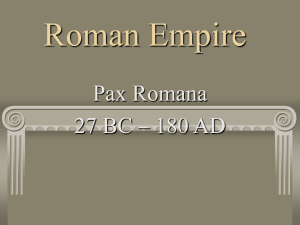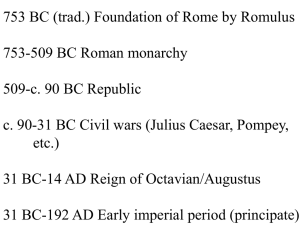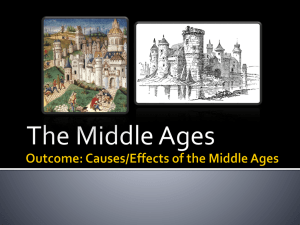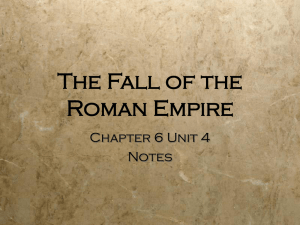Decline and Fall
advertisement
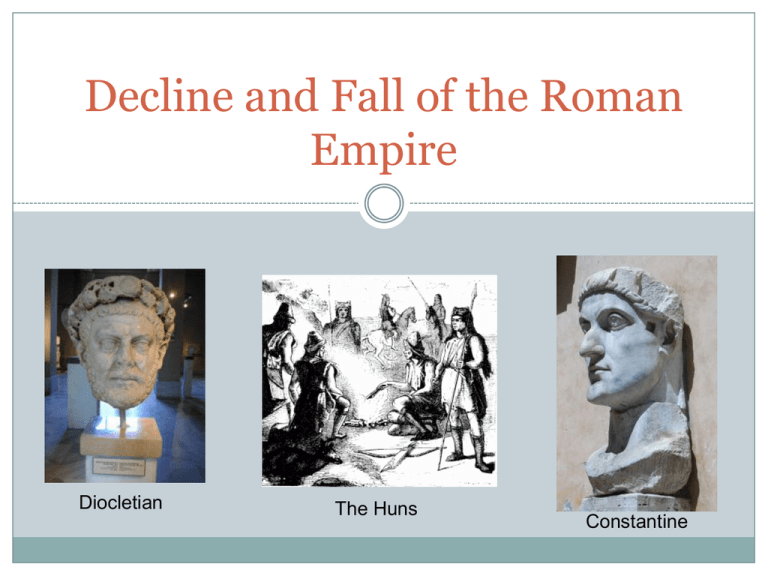
Decline and Fall of the Roman Empire Diocletian The Huns Constantine The Decline Problems and Upheavals Political upheavals, the plague, and the division of the empire led to its decline After Marcus Aurelius died in 180 A.D. Rome had a period of conflict, confusion, and civil war For 50 years, the Roman throne was occupied by whoever had military strength to seize it 22 emperors, most died violently Invasions East: Sassanid Persian Germanic tribes Problems and Upheavals Invasions, civil wars, and plague almost caused an economic collapse in the third century Plague: An epidemic disease Caused a labor shortage, which led to a decline in trade Farm production declined Because crops were ravaged by invaders By the mid-third century, Rome had to hire Germans to fight The didn’t understand Roman traditions and had little loyality to the empire or emperors Reforms by Diocletian and Constantine Two emperors that helped restore the Roman empire This new Roman empire included: A new governmental structure A rigid economic and social system New state religion: Christianity Diocletian divided the empire into four units, each with its own ruler under his rule Constantine expanded the policies of Diocletian Biggest project was the building of Constantinople, present day Istanbul, Turkey This “new” Rome became the center of the Eastern Empire Reforms by Diocletian and Constantine The lack of population made it difficult to raise and pay for an army through taxes Inflation: A rapid increase in taxes Diocletian issued a price edict in 301 that set wages and prices of goods Idea failed The emperors also forced people to stay in their vocations, or style of jobs The Fall and Germanic Tribes The migration of Germanic tribes helped bring an end to the Roman Empire The restored empire of Diocletian and Constantine lasted for more than 100 years Divided into two parts Eastern Roman Empire: Capital was Constantinople Western Roman Empire: Capital was Rome The Huns, from Asia, entered the empire to the east and put pressure on the Germanic Visigoths Visigoths were Roman allies then revolted against Rome Germanic Tribes More Germans now crossed into the Roman empire In 410, the Visigoths sacked Rome in 410 The Vandals poured into southern Spain and Africa In 455, the sacked Rome The words vandal and vandalize come from this tribe The western empire (Rome) fell in 476 when its emperor, Romulus Augustulus, was deposed by the Germanic head of the Army The eastern empire continued to thrive in Constantinople Theories on the decline of the Roman Empire Christianity’s emphasis on a spiritual kingdom weakened Roman military values Traditional Roman values declined as non-Italians gained prominence in the empire Lead poisoning through leaden water pipes and cups caused a mental decline in the population Plague wiped out one-tenth of the population Rome failed to advance technologically due to slavery Rome could not create a workable political system

